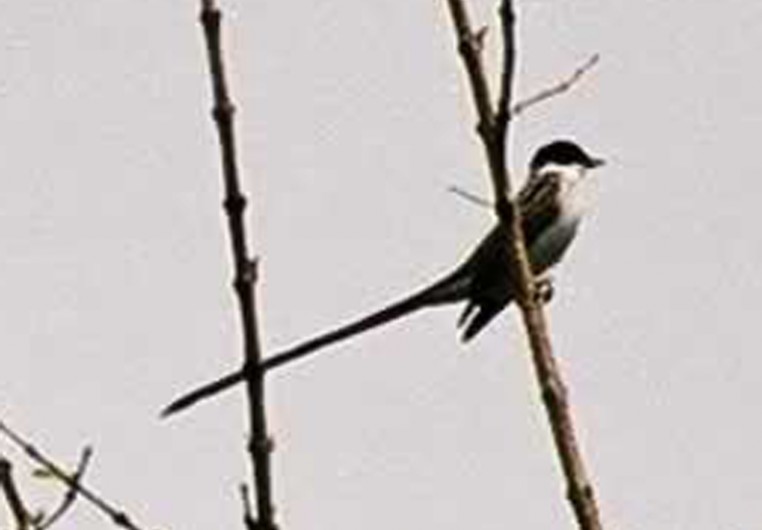Biodiversity
 Fork-tailed Flycatcher
Tyrannus savana | Vieillot, 1808
Fork-tailed Flycatcher
Tyrannus savana | Vieillot, 1808

Characterization: A small species measuring about 40cm in total length (29cm in tail length). Its chest is light gray and its belly white, its back is gray, and its head, wings, and tail are black; the tip of its head is sulfur-yellow.
Distribution: Throughout Brazil and from eastern United States to Argentina.
Habitat: Savanna, fields with sparse trees and bushes, pastures or even gardens in urban areas.
Habits: A diurnal and migratory species outside of the breeding period, when it comes together in flocks comprising thousands of individuals. These birds usually converge at the thousands in the Amazon. It is found in Minas in October/November. In Rio Grande do Sul it disappears in March and returns in September. The routes to and from the wintering regions does not always seem to be the same.
Diet: Essentially carnivorous, feeding mainly on insects but also on native fruits.
Breeding: It lays up to 4 eggs in simple bowl-shaped nest perched 2 to 8 meters above the ground and built with roots, kapok, dry grass, and small twigs.
In the UFRA area: In the studies carried out at the São Francisco Sugarmill areas, this bird species had a broad spatial distribution. It was found in these habitats: exotic woods, wetlands with riparian forests, restored native forests, native forests, drainage ditches, and forests and fields in spontaneous regeneration. It is considered frequent in the surveys, as it was spotted 48 times.



